cell injury
by Rayan 193


1. 1 causes
1.1. genatic
1.2. physical agent
1.3. chemical agent
1.4. biological
1.5. Oxygen deprivation
1.6. nutritinal.motabolic
1.7. immunological
1.8. cellular aging
1.9. Idiopathatic=unknown cause
2. 2 Oxygen deprivation
2.1. Hypoxia
2.1.1. aerobic oxidative respiration in Cells
2.2. ischemia
2.2.1. loss of blood getting to the tissue
3. 3 Types
3.1. revisable
3.2. IRreversable
3.3. adaptive
4. 4 revisable mechanism
4.1. - ATP
4.2. NA-k pump not working
4.3. swelling
4.4. dissociation of cytoplasmic organelss
4.5. blebbing
4.6. detachment of ribosomes from RER
4.7. Accumulation of lactate
4.8. intra celler lactic acidosis
4.9. decreased protein syntheis
5. 5 morphology
5.1. acute cellular swelling due to influx of water
5.2. cell memebrane and cytoplasm = blebbing
5.3. fatty changes apparance of lipid vacuoles in cytoplasm
5.4. Nucleus and mitochondria: NO change
6. 6 Reperfusion Injury MCHIN
6.1. = BLood got back to the tissue
6.2. 1 calciom overload lead to
6.2.1. + lipid peroxidation
6.2.1.1. +membrane damagae
6.3. 2 generation of toxic free radicals
6.3.1. lipid peroxidation
6.3.1.1. protin denaturation
6.4. subsequent inflamitory reaction
7. 7 irreversible
7.1. = cell death
7.2. membrane rupture
7.3. autolysis by lysosomal enzymes
8. 7.1 MCHIN of irrevesible
8.1. mitochondrial
8.1.1. -ATP
8.1.1.1. Necrosis
8.2. influx of calcium
8.2.1. activate enzymes that damage the cellar components + trigar apaptosis
8.3. + permeability of cellar membrane
8.3.1. end up in necrosis
8.4. damage DNA
9. 7.2 morphology
9.1. 1 membrane rupure
9.2. cytoplasm loss basophilia
9.3. nucleaus
9.3.1. pyknosis
9.3.1.1. shrinking
9.3.2. karyolysis
9.3.2.1. fade
9.3.3. karyorrhexis
9.3.3.1. fragmention
9.4. mitoconderial
9.4.1. damaged

